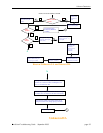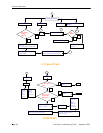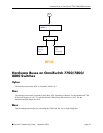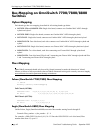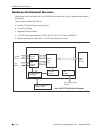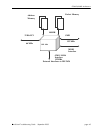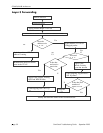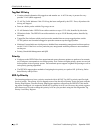
OS6624/6648 Architecture
page -46 OmniSwitch Troubleshooting Guide September 2005
Layer 2 Forwarding
• Packets enter the IXE2424 through the SMII & GMII/TBI pins from external PHY devices. First, the
MAC associated with the port the packet was received from processes the packet. The MAC checks the
CRC to see if the packet is valid and also updates appropriate receive packet port statistics.
• In parallel, two things happen next.
• The entire packet is stored in external packet memory and
• The 64 byte packet header is sent to the address resolution logic (ASIC)
• External packet memory contains dedicated memory space for each port. The system processor (via the
Memory Start and Depth Address Registers) configures this address space at power up.
• The packet headers are queued, on a per port basis, before being placed in the processing pipeline. The
headers are examined for errors (i.e. length field, legal MAC address etc). The header is then examined
for
• Presence of prepend word
• Ethernet frame format
• Protocol carried
• Presence of VLAN tag
The Next step is address resolution. Note some packets like BPDU, GARP, LACP etc, bypass address
resolution and are passed to CPU for further processing.
Address Resolution Protocol
The IXE2424 switches packets based on flow. For Layer 2 packets, the IXE2424 identifies the flow using
802.1Q VLAN tag and Source and Destination Ethernet addresses. For IP addresses, the flow can be iden-
tified by the Source and Destination IP addresses, the protocol carried by the packet, and Source and
Destination Socket numbers. The flow entries are created in the software using the Address Resolution
Task provided by Intel’s driver software.
The Address Resolution task registers with the Notification Manager to be notified when an unresolved
entry is received. The Notification Manager function running in the Interrupt Handler context wakes up
this task upon receiving an unresolved entry. The Address Resolution task contains functions for learning
addresses. The Address Resolution task checks the unresolved queues for new entries and uses the CAM
interface to add new addresses to the table. An entry is created for the address with default settings. The
task sends an event through the Event Manager indicating that a new entry has been created. The Configu-
ration Management task waits on this event and with an occurrence, processes the newly added address,
and applies any special properties configured for that address.




